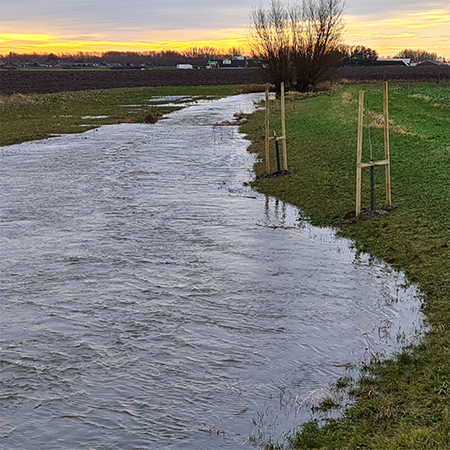Contact
 |
Magdalena Bieroza Researcher in Agricultural water management Department of soil and environment magdalena.bieroza@slu.se +464618671198 |

Agricultural headwaters are everywhere but at the same time much overlooked, despite their important role in regulating functions and quality of downstream ecosystems. They are often seen as passive pipes transporting agricultural pollutants, but with improved management, they could become stream ecosystems that provide many benefits. – We need a paradigm shift beyond the current view of these streams, says Magdalena Bieroza, researcher at SLU.
Agricultural headwaters are the first link between terrestrial and aquatic environments and function as corridors within agricultural landscapes. Consequently, they are subjected to high loads of pollution from agricultural soils. Agricultural practices also affect their function – which in turn has cascading effects on all downstream ecosystems such as rivers and seas.
In a new scientific paper, Magdalena Bieroza and her team highlight the important role of agricultural headwaters in reducing negative trends in the environment and climate. Amongst other things, she and her team believe that remediation of agricultural headwater streams is the missing link between catchment remediation and larger river restoration.
-Agricultural headwaters are imperative for the regulation of water flow variability and water quality, they are the missing link for river restoration. But they also have an important role to play in greenhouse gas emissions and ecosystem composition and function, Magdalena Bieroza explains.
Improving the management of these streams could offer great potential for synergies between different ecosystem functions and better overall cost-effectiveness and potential to achieve several policy goals simultaneously, such as climate adaptation and improvements in water quality and biodiversity.
- Scientists, authorities, and stakeholders need to intensify efforts to study, monitor, and remediate agricultural headwater catchments and streams, so that their important agronomic and drainage services finally reconcile with their ecosystem function, says Magdalena Bieroza.
Such efforts would provide guidance for stream restoration, which today often is based on stakeholder preferences and available funding rather than scientific evidence.
Agricultural headwaters also have a role to play in climate change. With higher frequencies of extreme weather events, we can expect an increase in fluxes of nutrients, sediments, and greenhouse gas emissions from the streams.
- Today, they account for 36 percent of all carbon dioxide emitted from running waters, and as such they are critical in terms of climate change mitigation, says Magdalena Bieroza.
Magdalena Bieroza and her team believe that we should recognize agricultural headwaters as critical ecosystems and interfaces between terrestrial and aquatic environments.
- We need a paradigm shift beyond the current view of agricultural headwaters as mere transportation channels for excess water and pollutants. They could become a pathway to a more sustainable future, she says.
The Scientific Paper
 |
Magdalena Bieroza Researcher in Agricultural water management Department of soil and environment magdalena.bieroza@slu.se +464618671198 |